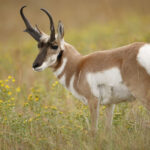
If you’ve never been on an antelope hunt, you may be wondering what all the excitement about. Well, it’s one of the most unique and rewarding experiences you can have out in the field. Antelope may not get as much attention as elk or deer, but they offer their own kind of challenge, beauty, and… Read more »





